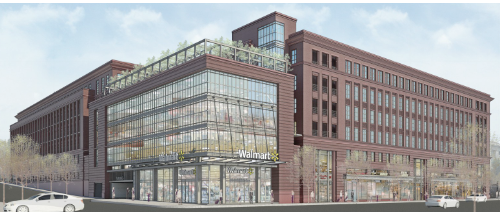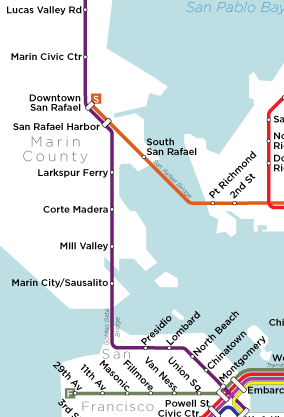In the aftermath of Plan Bay Area's passage, development skeptics in Marin have circulated a study showing that new construction gives of much higher levels of CO2 than renovating existing buildings even if that new construction is done in a very ecologically-friendly way. This, they say, is evidence that encouraging new construction will only increase our carbon footprint, and so Plan Bay Area, not to mention smart growth itself, is a sham. While the study, from the National Trust for Historic Preservation, is accurate in its assessment, skeptics are on shaky ground with this line of reasoning.
The study tries to answer the question, "Is new environmentally friendly development as greenhouse-gas efficient as renovating old development?" The answer, as common sense and the study say, is an almost* unequivocal yes. Construction is remarkably energy-intensive, and on its own is not a good way to improve our environment. We need to retrofit our existing structures as much as possible, adapting our old, underused buildings for a more urban future.
However, in the small towns most opposed to Plan Bay Area, this won't happen. The Bay Area just is not a rust belt area that underwent the kind of decline whose aftermath this study tries to examine. Were we Baltimore or Cleveland, our conversation would be much different, as we'd have bountiful abandoned buildings to repurpose. This is happening now in downtown Detroit. But we're not Baltimore, Cleveland, or Detroit. Our most bountiful development resources are not derelict industrial park brownfields. They are our grey fields, the monumental wastes of space that are our office park and mall parking lots. That will necessarily mean new construction.
Development skeptics purport the two alternatives are Grow or Don't Grow, like their towns are islands, but that's not a good understanding of our region. Instead, the alternatives are Grow or Grow Elsewhere. Marin did wonders by protecting its greenbelt and is in many ways a precursor to Plan Bay Area and the urbanist movement. However, the result has been - as the veterans of those fights say - a chronic housing shortage, displaced growth into Sonoma and Contra Costa, and a steady loss of those counties' farmland and greenbelt. Nobody wants Marin to look like Walnut Creek (at least, I hope not), but Walnut Creek is in part a result of Marin's development policies, as are Rohnert Park and the Oakland Hills.
While we could give up and do the minimum in the name of reducing our CO2 footprint, in reality we would just push people further out from the City and cause more greenfield development. Just because the lost greenbelt is outside our county borders doesn't make the loss any less a tragedy. Even if that new construction were built to smart-growth standards, it would still be built, so the CO2 will be emitted no matter what we do.
It's a preposterous argument to make that we shouldn't build anything because it would add to our county's CO2 footprint. It's just tricky accounting, offloading the problem to other cities and counties.
A far better approach is to view these mandates as opportunities to make more small-town greatness. Our downtowns are the heart and soul of our towns, but between them is bland nothing. That we keep our density in safe downtown boxes but call it evil if it ever tries to escape is a profound disservice to our cities, region, and the environment development skeptics argue we should save.
Why is 34 unit-per-acre housing in downtown San Anselmo quaint but "stack & pack housing" just a mile east? Why is 40-unit-per-acre housing "San Jose-style massive apartment block" in Corte Madera when 89 110-unit-per-acre housing is a centerpiece of downtown San Rafael? Downtown Mill Valley could colonize its strip-mall-dominated flats, downtown Sausalito could grow into Marin City, downtown Novato could transform the North Redwood corridor a place worthy of Marin's second-largest city, and each move would make these great towns and cities even greater. This is the essence of smart growth
And the benefits of smart growth go beyond simply reducing CO2 emissions from travel. Smart growth positively affects public health, public safety, town budgets, water pollution, greenbelt preservation, farmland preservation, housing affordability, and beyond. Yes, repurposing emits less CO2 than new construction, but this is a horrible reason to halt all growth in small town Bay Area. Not only would the growth would just happen elsewhere, but we'd be throwing away a chance to make our towns even better and stronger. That would be a tragedy.
*The exception to this is renovating warehouses, which are so energy-inefficient it's best to just knock them down and start over.
A version of this post was cross-posted with Vibrant Bay Area.



![Baltimore [Population: 288,530,000]](http://farm1.staticflickr.com/36/125498077_6a0785e1d8_z.jpg?zz=1)






